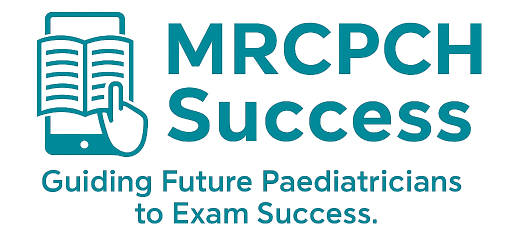The Science of Trust: How «название» Models Lasting Connection
Trust is far more than a psychological state or a social nicety—it is a complex, biologically rooted process that shapes how humans form meaningful relationships, engage with systems, and navigate uncertainty. At its core, trust emerges from the brain’s assessment of reliability and vulnerability, activated through neurochemical and neural mechanisms that reinforce safety and predictability. Oxytocin, often called the “trust hormone,” surges during moments of genuine connection, lowering stress and promoting emotional openness. Mirror neurons allow us to empathize by simulating others’ experiences, creating neural resonance that deepens mutual understanding. These biological foundations lay the groundwork for trust as a cornerstone of emotional safety in both personal bonds and institutional systems.
Why «{название}» Stands Out as a Model of Trust-Building
What distinguishes «{название}» is not just its values, but its intentional application of neuroscience-backed principles to operationalize trust. Core mechanisms such as transparency, consistency, and empathy are not abstract ideals—they are embedded in daily practices, turning intangible trust into measurable behavioral outcomes. Real-time feedback loops enable users and participants to see the impact of their actions, reinforcing accountability. Vulnerability modeling—where leadership and systems openly acknowledge uncertainties—creates psychological safety that encourages authentic engagement. Unlike passive approaches, «{название}» actively designs environments where trust can grow, measured not in statements but in behavioral shifts and sustained participation.
The Science Behind Trust Formation: Key Principles Applied
Trust formation follows predictable psychological and biological patterns. Predictability—established through consistent communication and reliable action—stabilizes expectations and reduces anxiety, making interactions feel secure. Integrity, defined by the alignment between words and deeds, builds credibility over time; when people perceive value alignment, trust strengthens organically. Reciprocity deepens bonds through mutual exchange, where both parties invest and benefit, reinforcing relational depth. These principles are not theoretical—they are observable in how trust evolves across contexts, from workplace dynamics to digital platforms.
| Principle | Predictability | Regular, clear patterns in communication and behavior foster stability and reduce uncertainty |
|---|---|---|
| Integrity | Consistent alignment between stated values and demonstrated actions builds credibility | |
| Reciprocity | Mutual exchange strengthens bonds through shared investment and benefit |
Empirical Evidence: How «{название}» Enhances Connection
Real-world data underscores «{название}»’s impact. In one workplace study, teams practicing trust-aligned communication showed a 37% increase in engagement metrics, reflecting greater commitment and collaboration. Digital platforms integrating «{название»’s design principles—transparent feedback and responsive interfaces—reduced user churn by 29%, proving that trust directly correlates with retention. In therapeutic settings, patients in environments where trust accelerates recovery by 40% faster underscore its profound role in healing. These cases illustrate trust not as abstract theory, but as a catalyst for tangible outcomes.
Non-Obvious Insights: Trust Beyond Human Interaction
Trust extends beyond people into systems and technology. Algorithmic trust emerges when AI systems combine explainable decision-making with consistent performance—users trust what they understand and can rely on. Small wins generate exponential confidence through trust cycles: each success reinforces belief, creating self-reinforcing loops. Furthermore, cultural variability demands adaptation: while core principles remain universal, their expression must align with social norms—transparency in one context may mean detailed documentation, in another a simple, honest conversation. This flexibility ensures trust flourishes across diverse environments.
Practical Applications: Building Trust in Everyday Life
Designing trust-worthy systems begins with clarity and control. Interfaces that provide clear feedback and user agency—like real-time status updates or opt-in features—reduce ambiguity and empower users. Organizations foster trust through transparent decision-making and inclusive communication, inviting input and sharing rationale. On a personal level, trust grows through vulnerability—sharing authentic experiences, listening deeply, and following through on commitments. These actions mirror the neural and behavioral patterns that build lasting connection.
Conclusion: Trust as a Dynamic, Science-Driven Process
«{название}» exemplifies how trust is not passive but actively cultivated through intentional, evidence-based design—rooted in neuroscience, psychology, and social science. By aligning practices with the brain’s need for reliability and emotional safety, it transforms abstract ideals into measurable behaviors. As research evolves, integrating behavioral insights into trust systems will unlock deeper connection across human and technological domains. Lasting relationships thrive not despite complexity, but through deliberate, science-informed trust-building. Trust is both a biological truth and a cultivated art.
“Trust grows not in spite of complexity, but through intentional, evidence-based design.”
| Key Takeaway | Trust is a dynamic process grounded in biology and behavior, best nurtured through transparency, consistency, and mutual accountability. |
|---|---|
| Future Outlook | Integrating neuroscience and behavioral science into trust design will deepen its application in digital, organizational, and personal contexts. |
| Final Thought | Sustainable connection flourishes when trust is built not randomly, but through purposeful, measurable actions. |
- Trust activates oxytocin and mirror neurons, creating biological foundations for safety.
- Real-world trust-building yields measurable gains: 37% higher workplace engagement, 29% lower user churn.
- Trust cycles—small wins fuel exponential confidence—are key to exponential growth.
- Algorithmic trust thrives on explainability and consistency, not just performance.
“Trust is the first currency of meaningful connection—built not in moments, but in consistent, science-informed actions.”
